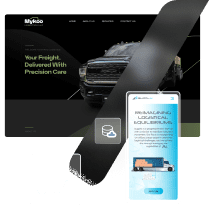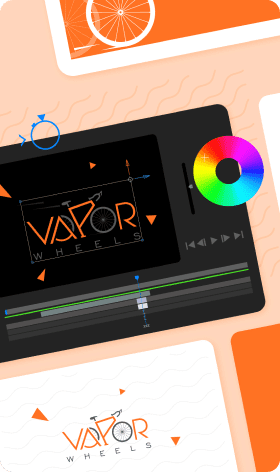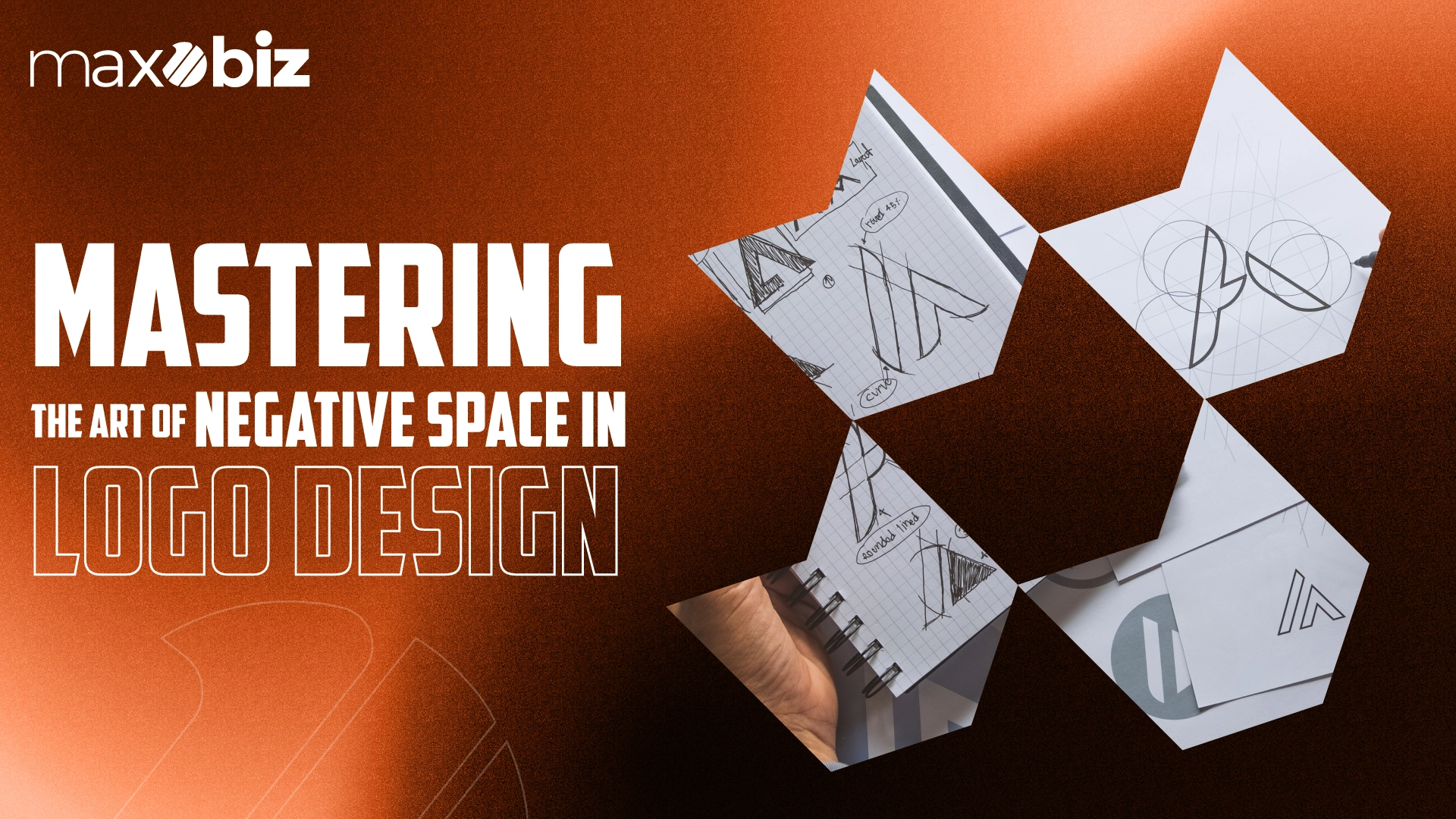Decoding Negative Space: What It Is and Why It Matters
The Magic of Unseen Elements in Design
In the fascinating world of design, there is a special power called negative space that often goes unnoticed. This blog will take you on a journey to understand what negative space is, discover its importance, and uncover how it influences how we see and understand designs.
Understanding Negative Space:
Negative space, also known as white space, refers to the empty areas surrounding and within design elements. It’s the empty canvas that gives shape and balance to the elements of a composition. While it may seem like empty or wasted space at first glance, negative space plays a crucial role in enhancing visual communication.
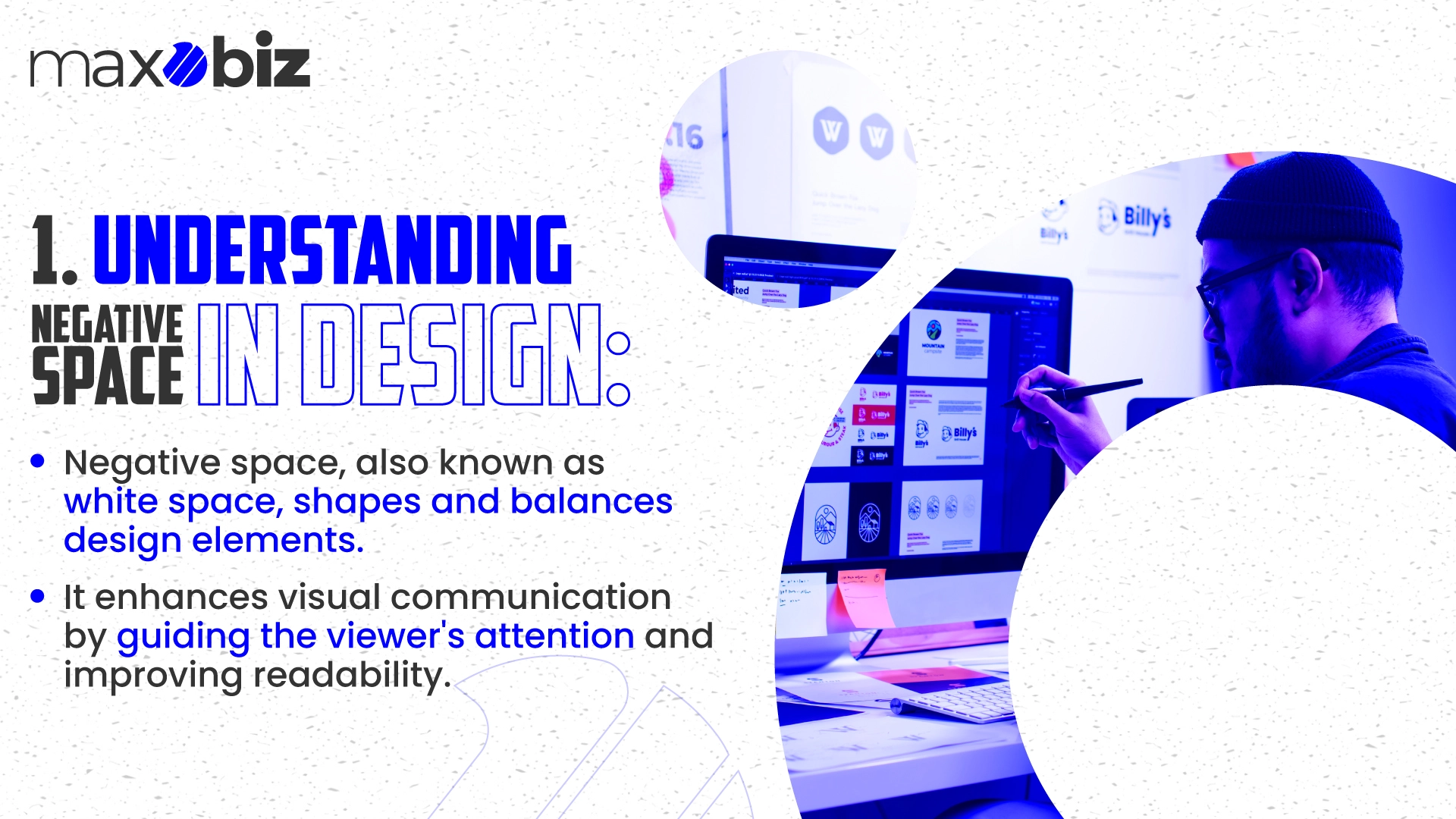
The Power of Perception: How Negative Space Shapes Design
Negative space is a designer’s secret weapon for creating harmony and visual balance. By strategically manipulating negative space, designers can shape perception, direct attention, and emphasize specific elements within a design. It provides readers with subtle visual cues, guiding their eyes and making the reading experience more enjoyable and engaging.
Enhancing User Experience:
User experience is paramount in web design, and negative space plays a fundamental role in creating a positive experience for visitors. Excessive clutter or lack of breathing room can overwhelm users and make it difficult for them to navigate a website. Employing negative space effectively allows for easy legibility, improved comprehension, and a sense of calmness that ensures users stay engaged and focused. Additionally, understanding brand identity through logo becomes clearer when negative space is utilized, as it allows the logo to stand out and convey its message more effectively. This approach not only enhances visual appeal but also reinforces the brand’s identity and values.
Unleashing Creativity:
Unconventional Uses of Negative Space While it is often associated with minimalistic and clean designs, negative space can also be used in unexpected and creative ways. By consciously manipulating negative space, designers can add depth, dimension, and even hidden messages to their artworks, leaving viewers with an intriguing visual experience that sparks curiosity and invites exploration.
The Art of Balancing:
Achieving Harmony between Positive and Negative Space Finding the perfect balance between positive and negative space is a skill that every designer strives to master. When properly balanced, negative space creates a sense of order and cohesiveness, allowing the design to breathe and the elements to shine. Too much negative space can lead to a lack of substance, while too little can create a cluttered and overwhelming design. Striking the right balance is key to achieving a visually pleasing and impactful composition.
The ‘Why’ Behind Negative Space in Logos
The intentional use of negative space, often associated with minimalism, has the power to elevate a logo and make a lasting impression on its audience.
Elevating brand identity with minimalism
Negative space in logos embraces the philosophy of minimalism, where less is more. By incorporating negative space, designers can create logos that are visually striking, clean, and sophisticated. The use of space allows the logo to breathe and stand out from the clutter. This minimalist approach helps brands convey simplicity, elegance, and a sense of modernity, ultimately elevating their overall identity.
The psychological impact on the audience
Negative space in logos has a profound psychological impact on viewers. Our minds are wired to naturally seek meaning and patterns, and when negative space is cleverly utilized, it can create subtle yet powerful visual cues. Viewers engage in a process of discovering hidden elements or messages within the empty spaces, which fosters a sense of intrigue and curiosity. This engagement enhances brand recall, as people remember logos that make them think or evoke an emotional response.
Exploring the Types of Negative Space in Logos
In the world of logo design, negative space plays a crucial role in creating visually striking and effective logos. By intelligently incorporating negative space, designers can unleash the power of hidden meanings, typography, and the law of closure to create logos that captivate and intrigue their audience.
Double Entendres: A Tale of Two Meanings
Some logos utilize negative space to cleverly depict dual meanings or messages. This technique, known as a double entendre, allows for creative storytelling within the logo design itself. By integrating negative space with intention, designers can intrigue viewers, provoke thought, and create a memorable logo that carries a deeper connection or association.
Hidden Gems: Uncovering the Invisible
Uncovering the Invisible Negative space in logos can be a treasure trove of hidden elements and surprises. Designers skillfully use this space to create hidden symbols, shapes, or imagery that reveal themselves upon closer inspection. Uncovering these hidden gems within a logo can be an exciting and delightful experience for the audience, adding an extra layer of intrigue and making the logo more memorable.
The Power of Typography: Saying More with Less
Negative space can also be utilized to incorporate typography within a logo design. By intelligently spacing and arranging letters or words, designers can create visually compelling and impactful logos. This technique allows for a harmonious blend of typography and imagery, capturing attention and delivering a strong message with minimal visual clutter.
Completing the Picture: The Law of Closure
The law of closure refers to our mind’s ability to fill in gaps and perceive complete shapes or images. In logos, negative space can be strategically used to stimulate this sense of closure, inviting the viewer to complete the missing parts and create a cohesive visual. This technique adds an element of engagement and satisfaction, as the audience subconsciously completes the logo in their minds.
Iconic Examples: When Negative Space Speaks Volumes
Negative space in logo design can be an incredibly powerful tool, allowing brands to communicate complex ideas and messages with simplicity and elegance. Now we will explore a gallery of inspiring logos that effectively utilize negative space. We will also delve into how top brands leverage this design technique to create impactful visual identities.
A gallery of inspiring logos
In this section, we will showcase a collection of iconic logos that effectively employ negative space. From world-renowned brands to innovative startups, these logos demonstrate the artistry and effectiveness of utilizing negative space to create visually captivating and meaningful designs. Each logo will serve as an inspiration for designers and entrepreneurs looking to leverage negative space in their branding efforts.
How top brands leverage negative space
Top brands understand the power of negative space and how it can elevate their visual identity. In this section, we will explore various ways in which leading companies leverage negative space in their logos. We will analyze the strategies they employ to create memorable brand marks that convey meaning, evoke emotions, and establish a strong brand presence. From technology giants to fashion icons, we will uncover how these brands use negative space to craft distinctive and timeless logos.
Designing with Negative Space: Tips and Tricks
We will explore tips and tricks for designing with negative space, enabling you to create visually compelling and memorable designs.
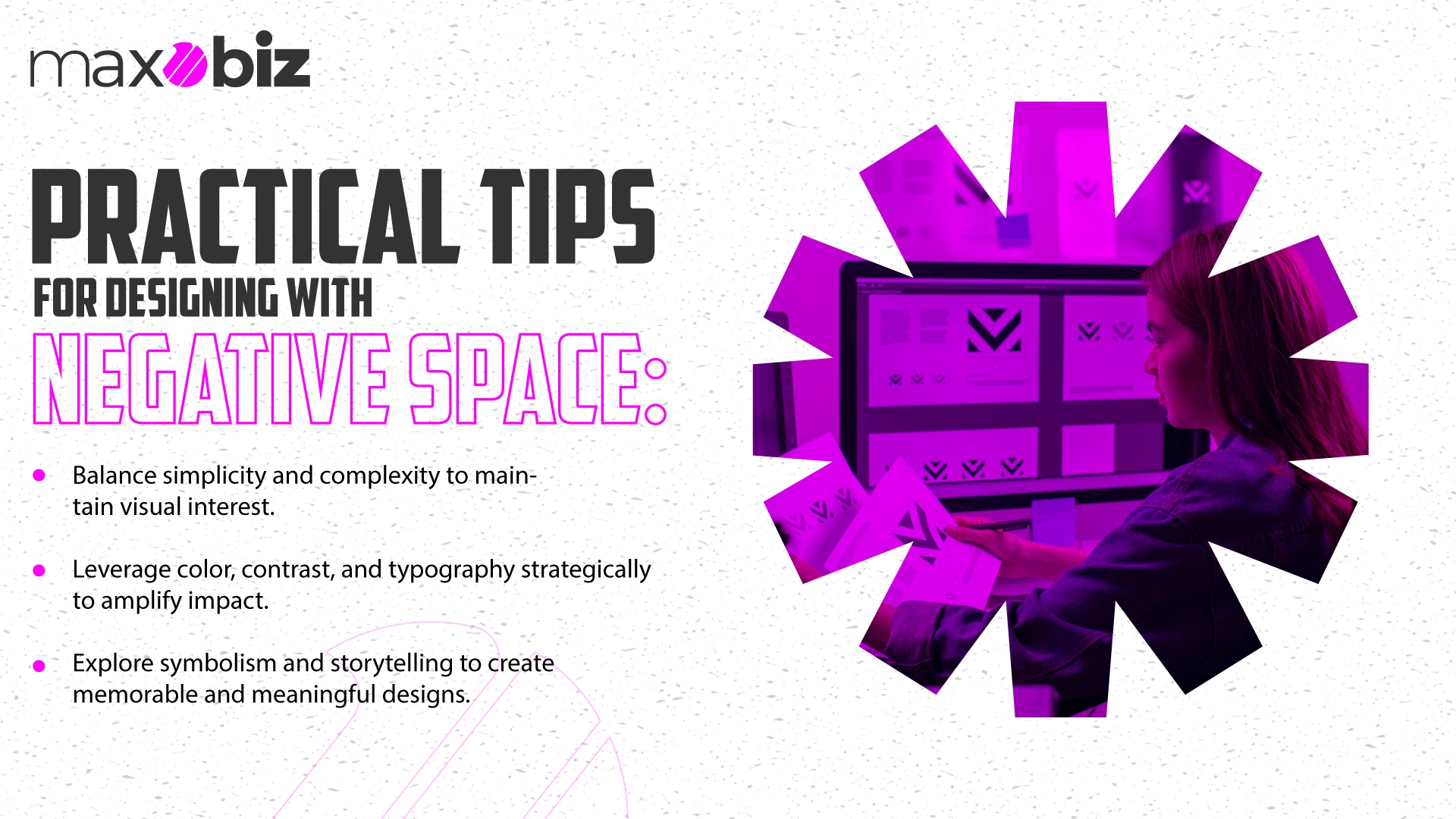
Balancing simplicity and complexity
One of the key aspects of using negative space effectively is striking the right balance between simplicity and complexity. Too much clutter can overwhelm the design, while too much space may make it feel empty. By carefully considering the placement and amount of negative space, designers can achieve a harmonious balance that captures attention and engages the viewer.
Harnessing color and contrast
Color and contrast play an essential role in designing with negative space. Contrasting colors can make the negative space stand out and draw attention to the intended focal point of the design. Experimenting with hues, shades, and tones can create captivating visual effects. By carefully selecting and using colors, designers can amplify the impact of negative space and create a visually striking composition.
Crafting faces and shapes within spaces
Negative space provides a unique canvas to craft faces and shapes within a design. By skillfully manipulating space, designers can create intriguing visuals that evoke emotions and tell stories. The mind naturally seeks patterns and completes missing elements, making these designs memorable and thought-provoking. Careful use of negative space can create hidden images or symbols that add depth and interest to the overall composition.
The Minimalist’s Palette: Color and Contrast in Negative Space
When it comes to designing with negative space, color, and contrast play a significant role in creating visually impactful and compelling designs. Now we will talk about the minimalist’s palette, focusing on utilizing a limited color palette for maximum effect and understanding the crucial role of contrast in negative space designs.
Using a limited color palette for maximum effect
In negative space designs, a limited color palette can work wonders. By choosing a few carefully selected colors, designers can create a harmonious and cohesive visual composition. The simplicity of a limited palette allows the negative space to shine and provides an opportunity to emphasize the intended focal point of the design. By using color strategically, designers can enhance the impact of negative space and create a visually stunning design that captures attention.
The role of contrast in negative space designs
Contrast is essential in creating visually striking negative space designs. Contrast refers to the juxtaposition of different elements, such as dark and light colors, or bold and subtle tones. By incorporating contrasting elements within the negative space, designers can create a sense of depth and visual interest. Contrast helps distinguish between the intended focal point and the background, ensuring that the negative space captures the viewer’s attention.
Negative Space and Brand Identity: A Match Made in Heaven
Now we will discuss the fascinating relationship between negative space and brand identity, and how these minimalist logos can effectively convey a brand’s message and create a lasting impression.
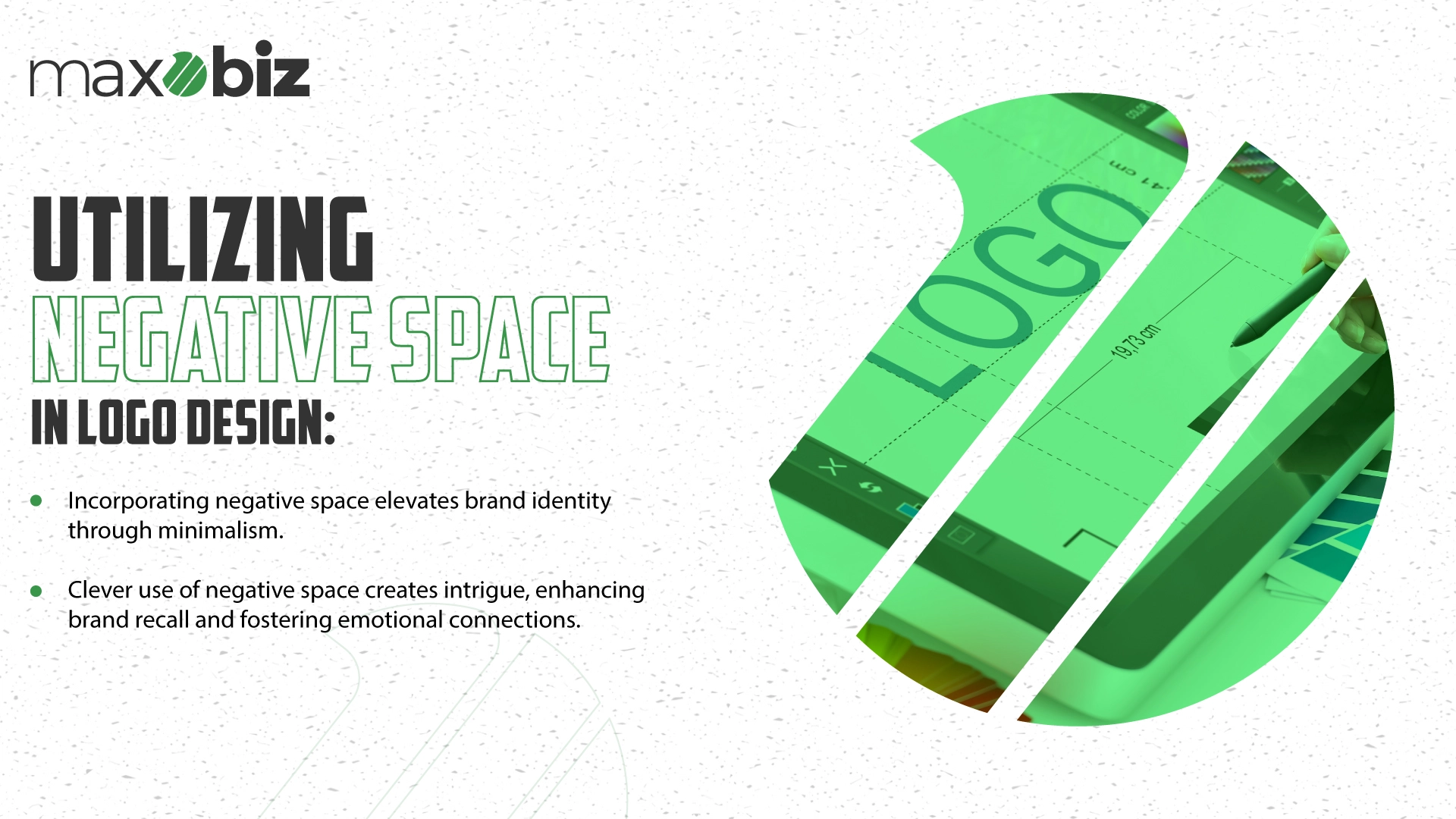
How negative space logos enhance brand recall
Negative space logos possess a unique ability to leave a memorable impression on the viewer. By leveraging the contrast between filled and unfilled spaces within a design, these logos create a visual puzzle that intrigues and engages the audience. This element of intrigue sparks curiosity and helps build a lasting connection with the brand. When consumers encounter these minimalistic logos, their minds are stimulated to actively fill in the missing spaces, leading to enhanced brand recall and recognition.
Telling your brand’s story through hidden elements
The beauty of negative space logos lies in their intricate storytelling capabilities. By artfully incorporating hidden elements within the design, these logos provide a subtle narrative that instantly connects with the audience. These hidden elements can represent the brand’s values, aspirations, or even its history, allowing the logo to transcend its visual appeal and become a symbolic representation of the brand’s essence. This storytelling aspect not only encourages consumer engagement but also fosters a sense of intrigue and curiosity, compelling individuals to explore the brand further.
From Concept to Creation: Crafting Your Negative Space Logo
We will explore the process from concept development to final execution, as well as offer insights on finding inspiration along the way.
Step-by-step guide to creating a negative space logo
Define your brand:
Before diving into the design process, have a clear understanding of your brand’s identity, values, and the message you want to convey. This foundation will guide the creation of your negative space logo.
Sketch ideas:
Start by sketching out rough ideas that incorporate negative space. Experiment with different shapes, letterforms, and concepts until you find a design that aligns with your brand’s essence.
Explore composition:
As you refine your sketches, pay attention to the balance between the positive and negative spaces within the design. Strive for a harmonious composition that creates visual interest and engages the viewer.
Consider symbolism:
Think about the hidden elements within the negative space and how they can convey meaning or tell a story that resonates with your audience. Incorporate elements relevant to your brand or industry to add depth and intrigue.
Iterate and refine:
Continuously refine your design, experimenting with different variations and exploring new ideas. Seek feedback from peers or professionals to gain valuable insights and make necessary adjustments.
Finalize the design:
Once you are satisfied with your logo, digitize it using design software to create a polished and scalable version. Pay attention to the proportions, clean lines, and overall aesthetics.
Finding Inspiration In Shapes and Shadows
Study existing negative space logos:
Research and analyze successful negative space logos from various industries. Observe how these logos incorporate shapes and shadows to create powerful visual impact and convey meaning.
Observe everyday objects:
Look for inspiration in the world around you. Everyday objects, architecture, nature, and even simple interactions can provide unique shapes and shadows that can be translated into your logo design.
Experiment with typography:
Negative space logos can also be created using typography. Play with letterform manipulation and explore how negative spaces can be formed within the characters to create a distinctive logo that stands out.
The Unseen Animals: Negative Space in Wildlife Logos
Negative space, when employed effectively in wildlife logos, has the power to create captivating and memorable designs. By strategically utilizing empty spaces, these logos can portray hidden animal imagery, adding depth and intrigue to the overall design. We will explore the art of incorporating negative space into wildlife logos, focusing on how it enhances their impact, creates lasting impressions, and adds an extra layer of meaning.
Creating memorable Animal logos with negative space
Research and observe:
Begin by researching the specific animal you want to represent in your logo. Understand its unique characteristics, including its shape, posture, and distinguishing features. This knowledge will help you creatively incorporate negative space to reveal the animal within the design.
Experiment with forms:
Start sketching different iterations of your logo, exploring how negative space can be utilized to depict the hidden animal. Play with proportions, angles, and positioning of the negative space elements to achieve the desired effect.
Simplify without losing essence:
Negative space logos thrive on simplicity, so streamline your design without sacrificing the essence of the animal you are representing. Strive for balance between the positive and negative spaces, allowing the hidden imagery to subtly emerge and engage the viewer.
Seek feedback and refine:
Show your logo drafts to colleagues, friends, or design professionals to gather feedback. Pay attention to their interpretations and perspectives, which can help you refine the design further.
How negative space Adds depth to animal imagery
Symbolism and storytelling:
Negative space offers a unique opportunity to incorporate symbolism and storytelling into your wildlife logo design. By employing the right shapes and placement, you can convey additional meaning, such as representing the animal’s habitat, behavior, or even its endangered status.
Evoke curiosity and intrigue:
Negative space logos create an element of surprise and intrigue, as viewers are compelled to discover the hidden animal within the design. This curiosity leads to increased engagement and a lasting impression on the audience.
Enhancing visual impact:
Negative space allows designers to create visually striking logos that have a strong impact while remaining simple and elegant. The interplay between the animal and the surrounding space adds depth and complexity, elevating the overall visual appeal of the logo.

Wrapping Up: The Impact of Negative Space in Logo Design
Negative space leaves a lasting impression, enhancing recognition and brand recall. It adds subtlety and depth, creating a unique narrative intrigue in logo designs.
The Lasting Impression of Minimalistic Designs
Minimalistic logos, especially those using negative space, stand the test of time. Simplicity and clarity contribute to memorable and timeless designs.
Why Negative Space Will Continue to Dominate Logo Trends
Versatility and scalability make negative space logos suitable for various mediums. The ability to convey multiple layers of meaning ensures enduring appeal in logo trends. Logo versatility is particularly evident in how these designs adapt to different contexts, whether on business cards, websites, or large billboards. A scalable logo is essential in maintaining the integrity and recognizability of the brand across these various platforms. By incorporating negative space effectively, designers can create logos that are not only visually striking but also flexible enough to meet the demands of diverse applications.









